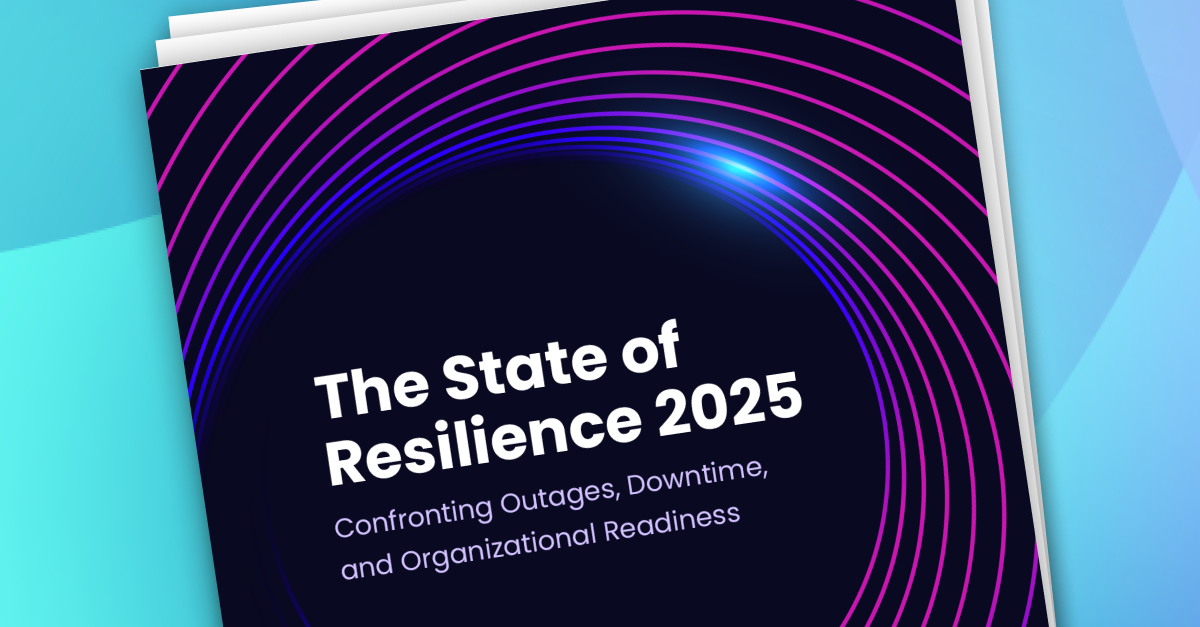This article is co-authored by David Joy, Senior Sales Staff Engineer for Cockroach Labs, Harsh Shah, Staff Sales Engineer for Cockroach Labs, and Krishnaswamy Venkataraman, Technical Specialist – Azure for Microsoft.
As organizations increasingly move to the cloud, scaling database infrastructure seamlessly while maintaining availability and performance becomes a top priority. Whether you're managing a fast-growing startup or an enterprise with global reach, finding the right balance between control, flexibility, and operational simplicity in a database is key: For those running on Microsoft Azure, CockroachDB presents a compelling choice.
This is the third article in the series, Unlocking Enterprise Scale with CockroachDB on Microsoft Azure, where we help you make the most of everything that CockroachDB on Azure has to offer. Visit our first post for an overview of how CockroachDB and Azure combine to unlock new levels of innovation and scale, for multiple use cases. Our second post highlights different production options, deployment strategies, and key considerations for single-region and multi-region setups, while introducing key aspects of the Azure ecosystem.
In this post, we’ll explore the production options available for CockroachDB on Azure, compare deployment strategies for single-region and multi-region setups, and dive into the critical aspects of survivability, security, and network configurations. If you're evaluating CockroachDB on Azure, this guide will help you choose the right approach for your specific needs.
1. Production options for CockroachDB on Azure
Self-Hosted
Self-hosting CockroachDB on Azure means setting up and managing your own infrastructure. This approach gives you full control over the database environment, allowing you to tailor everything from virtual machines to storage options according to your needs.
You’ll need to provision Azure Virtual Machines (VMs) for your CockroachDB cluster, manage networking, handle OS updates, and ensure backups and patches are in place. Essentially, you're responsible for the whole stack, but that also means you can optimize every piece of it for your specific workloads.
Why Self-Host?
You have specific requirements for infrastructure control and customization.
Your team is experienced with database management and can handle the operational overhead.
Trade-Offs:
The operational burden is higher than the fully managed option.
It requires more operational expertise to ensure reliability and performance at scale.
For some, this level of control is a benefit; for others, it can become a burden as infrastructure grows.
CockroachDB Dedicated
If you prefer focusing on your application instead of managing infrastructure, CockroachDB Dedicated is a great alternative. This managed solution is hosted by Cockroach Labs but can run on Azure infrastructure. It offloads operational tasks like scaling, patching, backups, and monitoring, letting you concentrate on your product rather than the database.
Why Choose CockroachDB Dedicated?
You want the benefits of CockroachDB’s capabilities without the operational complexity.
You need an enterprise-grade, managed service that integrates smoothly with Azure.
Trade-Offs:
While you gain operational simplicity, you sacrifice some level of control over the underlying infrastructure.
For teams looking for reliable, production-grade infrastructure with minimal management overhead, CockroachDB Dedicated is the Azure database go-to option.
Self-Hosted on AKS
For those embracing containerization and Kubernetes, running CockroachDB on Azure Kubernetes Service (AKS) is a powerful option. This allows you to manage CockroachDB clusters using Kubernetes, benefiting from Kubernetes' orchestration, auto-scaling, and resiliency features.
Why AKS?
You’re already using Kubernetes for other parts of your infrastructure.
You want to take advantage of Kubernetes’ self-healing and scalability features.
Trade-Offs:
Kubernetes can add complexity, and you'll need expertise in both CockroachDB and Kubernetes to optimize deployments.
Scaling across regions is easier, but multi-region orchestration still requires careful planning and setup.
This is a great option for cloud-native teams with a strong Kubernetes focus, who want to leverage its capabilities for managing CockroachDB.
2. Deployment strategies: single-region vs. multi-region
Single-Region Deployment
When it comes to simplicity, single-region deployments are appealing. By keeping all of your CockroachDB nodes within a single Azure region, you minimize cross-region complexity and latency concerns. This setup works well for applications with a localized user base and lower redundancy requirements.
You’ll typically distribute nodes across multiple availability zones within the same Azure region to ensure high availability in case one zone goes down. Azure offers several regions with availability zone support, so it’s easy to configure a zone-resilient setup.
Ideal For:
Applications with a user base concentrated in one geographic area
Simpler operational overhead, especially for organizations not needing global distribution
However, the major limitation is survivability in the case of a regional outage. Without multi-region failover, the entire system could be impacted if that region goes down.
Multi-Region Deployment
On the other hand, multi-region deployments unlock the full potential of CockroachDB’s global distribution capabilities. By spreading your nodes across different Azure regions, you not only improve survivability but also bring data closer to your users, reducing latency for geographically diverse applications.
CockroachDB's geo-replication capabilities mean that it can automatically handle data placement, ensuring that data remains available even if an entire region fails. Azure’s global footprint and network infrastructure make it a great match for CockroachDB’s architecture.
Ideal For:
Applications with users distributed across different geographic regions
Businesses that require strong disaster recovery and high availability across regions
Considerations:
Higher operational costs due to running infrastructure across multiple regions
Increased complexity in terms of optimizing for latency, networking, and traffic management
For enterprises requiring global scale and robust disaster recovery, multi-region is the clear winner – although it does come with more setup complexity and cost.
3. Survivability goals in CockroachDB on Azure
CockroachDB’s distributed nature makes it uniquely suited to handle failure scenarios, whether at the node, zone, or regional level. But when deployed on Azure, how do you fully leverage this capability to meet your organization's survivability goals?
Availability Zones and Regions
In a single-region setup, Azure availability zones can help by distributing CockroachDB nodes across physically separate locations within a region. This ensures that if one zone experiences an outage, the other nodes in the region can still maintain availability.
For the highest level of survivability, deploying across multiple Azure regions ensures that even if an entire region goes down, your database remains operational. With CockroachDB’s synchronous replication and quorum-based consensus model, you’ll still maintain database availability, as long as the majority of nodes across regions remain up.
Quorum and Replication
CockroachDB’s use of quorum-based replication allows for survivability even if part of the system goes offline. By ensuring that a majority of nodes in the cluster agree on changes, the system can continue to operate smoothly, even during outages. This is particularly useful in Azure’s multi-region deployments, where regional failures can be mitigated by routing traffic to other healthy regions.
4. Key features of the Azure ecosystem
Azure’s cloud ecosystem provides a robust set of tools and services that complement CockroachDB deployments, making it easy to integrate and manage your database within your organization’s existing infrastructure.
Azure Load Balancer
CockroachDB nodes need to efficiently distribute traffic across the cluster. Azure Load Balancer can handle traffic distribution, ensuring that requests are routed to the appropriate nodes. Whether using internal or external load balancers, you can easily scale as traffic increases.
Azure Virtual Network (VNet)
To ensure secure, high-performance networking between your nodes, deploying CockroachDB within an Azure Virtual Network (VNet) is essential. VNets provide private, isolated networking for your CockroachDB cluster and enable secure communication between different services in your Azure environment.
For multi-region deployments, you can use Azure’s global virtual network peering to minimize latency between CockroachDB nodes in different regions. This enables faster cross-region replication and reduces the time it takes to handle requests.
Azure Key Vault
Security is a key consideration for any database, and CockroachDB can integrate with Azure Key Vault to securely manage encryption keys and secrets. By storing your encryption keys in Azure Key Vault, you benefit from centralized management and auditing capabilities, making it easier to enforce strong security policies.
Monitoring and Insights with Azure Monitor
CockroachDB’s performance and health are critical to your application’s success. Azure Monitor and Log Analytics allow you to keep a close eye on the performance of your CockroachDB deployment. These tools provide real-time insights into CPU usage, memory consumption, and network traffic, helping you identify potential issues before they impact your users.
5. Security Considerations
Security is an integral part of any production database. CockroachDB, combined with Azure’s security infrastructure, provides a secure environment for your data.
End-to-End Encryption
CockroachDB supports encryption of data at rest and in transit by default. This ensures that data is protected both as it moves between nodes and as it’s stored on disk. For additional security, Azure Key Vault can manage the encryption keys, allowing for secure key rotation and auditing.
Role-Based Access Control (RBAC) and Microsoft Entra ID Integration
CockroachDB’s role-based access control (RBAC) can be extended with Microsoft Entra ID (AAD) integration, allowing you to manage user authentication and authorization centrally. By tying CockroachDB into your existing Azure identity infrastructure, you can enforce strong access controls across your entire cloud environment.
6. Network Considerations
Private Networking with Azure Virtual Network
Using Azure’s VNet, you can create an isolated, secure environment for your organization’s CockroachDB nodes. VNets ensure that CockroachDB nodes communicate over a private, non-internet-facing network, reducing the risk of exposure to external threats.
Multi-Region Networking
For multi-region deployments, Azure’s global network infrastructure ensures low-latency communication between nodes in different regions. By using VNet peering, you can establish secure and high-performance links between regions, minimizing the impact of cross-region communication.
Traffic Management with Azure Traffic Manager
Azure Traffic Manager helps distribute user traffic across multiple regions, ensuring that your application is always responsive, even during regional outages. When combined with CockroachDB’s multi-active capabilities, this enables a highly available, globally distributed database that can handle network failures gracefully.
CockroachDB and Azure: High availability, performance, security 
CockroachDB on Azure provides an exceptional combination of scalability, resilience, and ease of management, whether you opt for a single-region setup or a multi-region deployment spanning the globe. With Azure’s ecosystem and CockroachDB’s distributed architecture, you can confidently operate enterprise-grade applications that meet the highest availability, performance, and security standards.
As you plan your deployment, consider the trade-offs between self-hosted, managed, and Kubernetes-based approaches. Knowing your business needs will help you make the right decisions to unlock the full potential of CockroachDB on Azure.
Stay tuned for the next part of this series, where we dive deeper into optimizing your CockroachDB deployment for production workloads!
Ready to unlock the full potential of your enterprise data strategy with CockroachDB and Azure? Visit here to speak with an expert.








